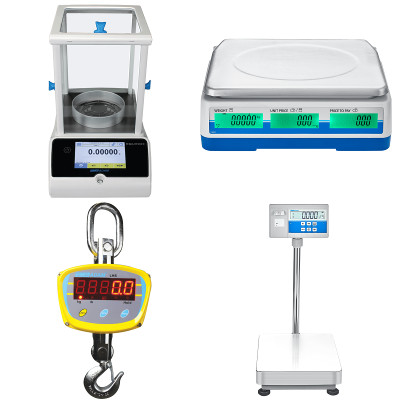
Scales and balances are widely available in many different sizes, capacities and readabilities. They are ubiquitous: most of the objects we use or consume every day have been weighed and some even display the weight or the content’s weight on the package. Why are scales used so widely? What is a weighing scale used for?
A Long History
Humanity has been using some kind of weight measurement for a long time; archaeologists have found scales from periods as early as 2000 B.C. When trade and agriculture took hold in various civilizations and goods could be accumulated, they needed a way to quantify, or measure, the goods they had, and how much they could exchange them for. In addition, knowing how much of something one had allowed people to plan for events, change of seasons, droughts and more. Understanding and quantifying the concept of mass and weight also lead to greater understanding of physics, which was helpful in fields ranging from transportation to aviation. However, there were often no specific standards, so a unit of measure could differ wildly from one city to the next, to say nothing of countries.
Weight or Mass?
That depends. Balances measure mass, while scales measure force. Weighing scales and balances measure weight by measuring the amount of force exerted on the load cell. They then convert that result to mass and display it in various units of mass. If they didn’t convert it to kilos or pounds, the result would be measured in Newtons. Scales give different results based on gravity.
Balances, confusingly, use something called a force restoration mechanism to create a force that balances the unknown mass. Old balances used two pans to balance known masses against unknown objects. A balance’s results are not affected by changes in gravity. Read this blog post for a more in-depth look at the differences between balances and scales.

While mass and weight are not the same thing, they are used synonymously on Earth because they rarely differ and it makes our lives much easier. To learn more about the difference between mass and weight, check out this blog post.
Why Is Weighing So Important?
Mass is a fundamental measurement, as many formulas and other units of measure use mass in their formulas, often expressed as products or ratios of mass. That means if we want to understand matter and the world around us, we must understand and be able to accurately quantify mass and weight. This allows us to create and refine various things, from Plank’s Constant (refined in the search for the new kilogram) to more efficient space travel.
Who Uses Weighing Scales?
The short answer is almost everyone! While there are a lot of different scales in various industries, the goal of weighing is always the same: to obtain a precise quantification of the matter that makes up various objects in order to use that number to transport, record, process or use the object or matter more efficiently. From making medication to calculating the amount of fuel needed by a plane, mass and weight are integral components in a wide variety of formulas and calculations needed to improve our daily lives. Engineers need to know the weight of cars or trucks when building a bridge that will have to support them. Animal sanctuaries often have to weigh the animals in their care to make sure they’re healthy and to feed them properly. Scales are very handy when measuring raw materials because their shape is often irregular, so weight can be the only way to properly assess their worth.

In science, aside from pure quantification, setting weight standards for samples allows for streamlined testing procedure and simplifies applications such as formulation, mixing or assessing a sample’s properties. When medicine has a recommended dosage, it’s based on the average weight of the species that will be using it.
Weighing is also useful for commercial applications. From businesses buying raw materials to customers doing their grocery shopping, scales allow buyers and sellers to know exactly what they’re selling and buying, and how much the things they’re buying are worth. Standardized quantities make things easier and allow for quick comparisons between products. For example, if a consumer buys a can of soda, they usually get 12 ounces of liquid. When they shop, if different sodas have a different price for the same quantity (i.e., unit price), they can infer that maybe the more expensive one is made with better materials or perhaps uses fair trade ingredients. It’s also easier for companies to arrange shipping and stores to create displays when they know bottles or packages will all be specific sizes.
Trade-approved scales are helpful for consumer trust, essentially providing a way for people to be sure that they are getting exactly what they’re paying for. That can also be useful in laboratories, where certifications or calibrations must be conducted as specified to get reliable results that can be trusted by everyone who will use these results for further analysis.

Standardized weighing can help promote national and even international cooperation. If shipping containers always have the same tare weight, it helps transporting and logistics when moving goods around the word. For science, using standard units means that scientists can share results and collaborate on work internationally without having to constantly convert back and forth.
Scales and balances are everywhere because they allow us to quantify basic units that make up matter. Whether we weigh materials to ship them or to make samples that will be used in other processes, weighing is an integral of processing matter in any context, from jewelry to chemistry.
Do you have questions about scales and balances? Don’t hesitate to contact us.

